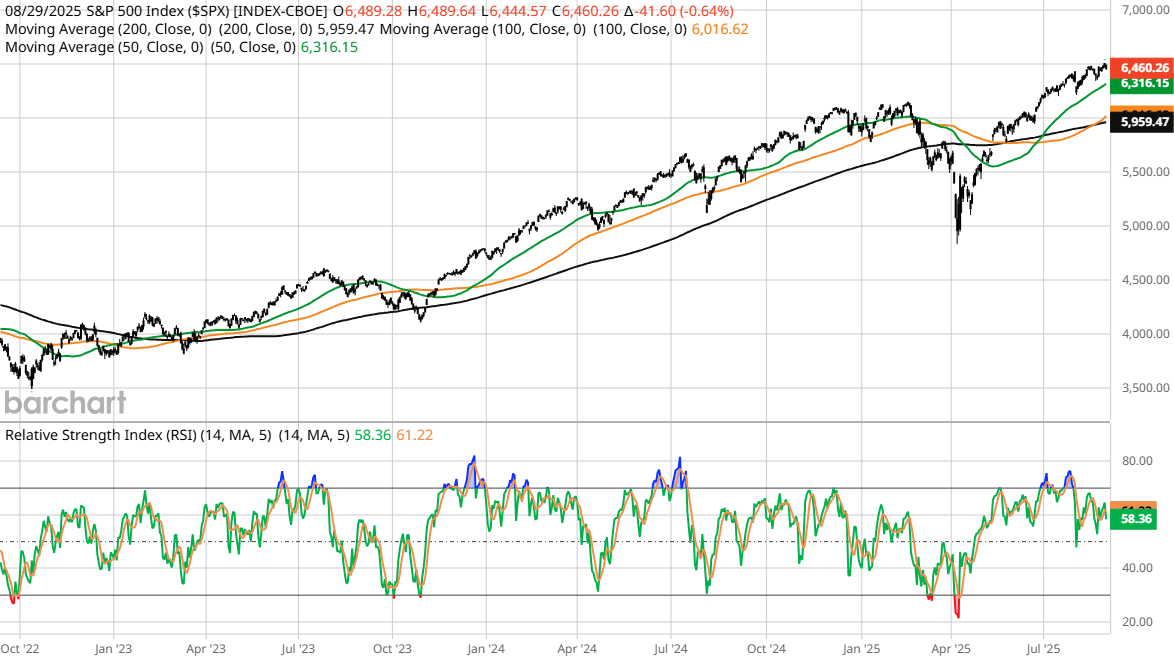- Market Overview
- Futures
- Options
- Charts
- Custom Charts
- Spread Charts
- Market Heat Maps
- Historical Data
- Stocks
- Real-Time Markets
- Trading Calendar
- Futures 101
- Commodity Symbols
- Real-Time Quotes
- CME Hedging Resource Center
- Farmer's Almanac
- USDA Reports
- Markets/News
When Markets Peak, Catalysts Are The Only Edge That Matters

Markets sit at all-time highs, and that creates as much anxiety as excitement. Every fund manager knows the question that follows. Clients want to know what happens if the rally reverses. It is a fair concern, and it keeps many from sleeping easily.
The instinct is to reach for macro forecasts or market timing, but that approach rarely gives an edge. Predicting the next move in the S&P is a coin flip at best. The real answer is different. Catalysts. Structural events that create their own return paths and offer protection and opportunity that the broader market cannot.
The Problem Fund Managers Face
Fund managers face challenges when benchmarks reach unprecedented levels. If they stay fully invested, they run the risk of a sharp drawdown that wipes away months of performance. Holding back puts them at risk of falling behind as the market rises. Either way, underperformance is waiting.
The pressure does not stop there. Clients want to know why they are paying active fees if the portfolio looks like the index. They ask the same question again: “Why am I paying you to own what I could buy myself?” For managers, this tension is constant and unforgiving.
Most lean on narratives to defend positioning. They point to sentiment, liquidity, and the direction of rates. Yet none of these are within their control. They provide a story, not a solution. In a market that is priced for perfection, relying on that story offers little protection when the cycle turns.
The real risk is not whether the S&P ticks up or down. The bigger risk is holding a portfolio without catalysts. Without events that can unlock value on their own, performance is tied entirely to market direction. Being in a position where markets are peaking and clients are expecting results can be dangerous.
Why Macro Doesn’t Save You
Fund managers spend endless hours debating interest rates, inflation prints, and election outcomes. The problem is that none of these can be predicted with any consistency. Even when the forecasts are right, the market response is often the opposite of what was expected. That is not a formula for alpha.
Consensus narratives dominate the conversation. Everyone has a view of the Fed, fiscal policy, or growth. But when everyone shares the same framework, there is no edge. You are competing in the most crowded part of the field.
Look back over the last decade. The biggest winners were not selected based on anyone accurately predicting interest rates or central bank actions. They were identified because something changed at the company level. Spin-offs, restructurings, management shifts, and capital allocation decisions drove returns that cut through macro noise.
This is the point investors miss. Macro does not save you. Catalysts do. They create returns independent of the index and deliver outcomes that forecasting never can.

What Catalysts Really Do
Catalysts are not theories or forecasts. They are tangible corporate actions that force value into the market. They include spin-offs, breakups, buybacks, mergers and acquisitions, insider convictions, and restructurings. Each one has a common thread: they create a trigger that shortens the timeline for value to be recognized.
That compression of time is what separates catalysts from market noise. Instead of waiting years for a theme to play out, catalysts push change into a window that investors can measure. They are also uncorrelated with broader moves. A company spinning off a division or announcing a breakup is not betting on the Fed or GDP growth. It is pulling an internal lever that changes how capital is allocated and how investors value the business.
The results speak for themselves. (GE)'s breakup delivered a 400 percent return for investors who saw the setup early. (PHIN), spun out of BorgWarner, doubled quickly after the separation. (AMRZ), a spin-off from Holcim, saw insiders across the C-suite buying aggressively, sending a strong signal of conviction.
Catalysts work because they sit at the intersection of corporate behavior and investor psychology. Companies make decisions that alter structure. Investors respond when perception catches up with reality. That collision is where outsized returns are born.
Why Most Managers Miss Them
Most managers are anchored to macro narratives, so they overlook catalysts altogether. They spend their time debating rates, currencies, and politics, while the real triggers sit inside company filings.
Value investors succumb to yet another trap. They focus on “cheap” names but often ignore whether there is a reason for that value to be unlocked. Without a catalyst, cheap stays cheap. Growth investors avoid complexity for a different reason. Spin-offs, restructurings, or carve-outs look messy, so they shy away, even when the opportunity is clear.
The other problem is resources. Analyzing spin-off filings, carve-out documents, or restructuring plans takes time and expertise. Many managers simply do not dig into that work. As a result, the best setups sit hidden until the rerating has already taken place.
This is why so many miss the returns that catalysts can deliver. They are not in the headlines, and they do not fit into neat style boxes. They require looking where others are not, and that is exactly why they continue to produce outsized results.
The Edge In Catalysts
Over the last twenty-five years, our research into spin-offs has shown one consistent truth: catalysts deliver outperformance regardless of the market cycle. Whether the S&P is in a bull run or a correction, catalysts continue to create their own path. In our study, spin-offs taken over delivered an average return of 33 percent, a result no macro forecast could have engineered.
The reason is behavioral. Forced selling, insider conviction, and structural change combine to create predictable patterns. When a company spins out a division, index funds often have to sell the new entity regardless of quality. That creates mispricing. When insiders step in and buy, it signals confidence others miss. When structure changes, investors are forced to rethink the valuation. These are repeatable dynamics that can be analyzed, tracked, and acted upon.
This is the work we have focused on at The Edge for decades. We find the situations the market only appreciates after the rerate, when the easy money has already been made. The advantage comes not from predicting the market but from analyzing behavior around catalysts and positioning oneself ahead of the crowd.
Catalysts are not luck. They are a process. Done right, they are the only edge that continues to deliver when the market is priced for perfection.
A Call To The Manager
Markets are sitting at highs, and the fear of a fall is never far from the surface. Most managers faced with this backdrop will take one of two paths. They either stay in and hope the rally continues, or they pull back and risk missing the upside. Both choices are defensive, and neither creates a real edge.
The proactive path is different. It is to allocate into equities with catalysts, the kind of events that force value to be recognized on their own timetable. These companies play by rules that have nothing to do with the index. They generate returns regardless of whether the market trades higher or lower.
The next GE breakup, the next Phinia, the next overlooked carve-out are already in motion. The only question is whether you will be positioned before it becomes obvious.
That has been our focus from day one at The Edge: helping managers capture the returns others leave on the table. Catalysts are not theory. They are repeatable and measurable. They are also the only true edge when markets peak and the rest of the field have nowhere left to hide.
On the date of publication, Jim Osman did not have (either directly or indirectly) positions in any of the securities mentioned in this article. All information and data in this article is solely for informational purposes. For more information please view the Barchart Disclosure Policy here.